 1990 Rover 400 (XW) Dimensions, Size & Specs
1990 Rover 400 (XW) Dimensions, Size & SpecsMeasurements of the 1990 Rover 400, engineered for optimal performance and comfort
| Dimensions | |
|---|---|
| Length: | 4370 mm172.0 in14.3 ft |
| Width: | 1680 mm66.1 in5.5 ft |
| Height: | 1400 mm55.1 in4.6 ft |
| Trunk Capacity: | 410 liter14.5 cu ft |
| Weight Specifications | |
| Curb Weight: | 1075-1220 kg2370-2690 lbs |
| Maximal permitted Weight: | 1550-1610 kg3417-3549 lbs |
| Tire Specifications | |
| Rims Size: |
|
| Tire Sizes: |
|
The Rover 400 (XW) is a compact sedan produced by Rover between 1990 and 1995. This model offers a balanced blend of classic British styling and practical dimensions, making it suitable for urban use and comfortable family driving. Measuring 4370 mm (172.0 inches) in length, 1680 mm (66.1 inches) in width, and 1400 mm (55.1 inches) in height, the Rover 400 strikes a practical medium size within its class. Its curb weight ranges from 1075 kg to 1220 kg (2370 to 2689 lbs), while the maximum gross weight lies between 1550 kg and 1610 kg (3417 to 3548 lbs), showcasing its solid build quality and capacity for passenger and cargo weight. The sedan's luggage compartment offers a generous 410 liters (14.5 cubic feet) of storage space, sufficient for everyday luggage and grocery needs. Available with multiple tire sizes, including 175/65 R14, 185/60 R14, and 195/55 ZR15, the Rover 400 XW provides flexibility in handling and ride comfort tailored to driver preferences. Equipped with 14-inch rims predominantly, it fits well within the compact sedan segment of the early 1990s. This combination of dimensions and weight ensures the Rover 400 offers stable road manners, ease of parking, and sufficient interior space, making it a distinctive choice in its category during its production run. Overall, the Rover 400 (XW) from 1990-1995 remains a noteworthy contender among compact sedans for its size, usability, and classic Rover appeal.
Discover the standout features that make the 1990 Rover 400 a leader in its class
Have a question? Please check our knowledgebase first.
The Rover 400 (XW) sedan measures 4370 mm (about 172 inches or 14 feet 4 inches) in length, 1680 mm (approximately 66 inches or 5 feet 6 inches) in width, and has a height of 1400 mm (roughly 55 inches or 4 feet 7 inches). These dimensions position it as a compact sedan that balances interior space with manageable exterior size for daily driving.
The curb weight of the Rover 400 (XW) ranges between 1075 kg to 1220 kg (2371 to 2689 pounds). This moderate weight contributes to a nimble driving experience with responsive handling while maintaining sufficient stability on highways. The weight range varies depending on specific trims and equipment levels, affecting fuel consumption and performance accordingly.
The maximum gross vehicle weight of the Rover 400 (XW) lies between 1550 kg and 1610 kg (3417 to 3549 pounds). This includes the vehicle's own curb weight plus passengers, cargo, and fuel. Considering the curb weight, this means the car can safely accommodate a payload of approximately 475 to 535 kg (1047 to 1179 pounds), offering practical utility for everyday commuting and moderate luggage.
The Rover 400 (XW) offers a luggage capacity of 410 liters (around 14.5 cubic feet), which is quite decent for a compact sedan. This amount of space can comfortably accommodate several suitcases or grocery loads, making it well-suited for family trips or daily errands. Its rear trunk design ensures easy access to maximize usable cargo volume.
The Rover 400 (XW) came equipped with 14-inch rims as standard, supporting a variety of tire sizes including 175/65 R14, 185/60 R14, 175/70 R14 T, 175/65 R13, 175/70 R14 H, and 195/55 ZR 15. These tire options allow some flexibility for owners prioritizing comfort, grip, or sportiness. The combination of rim and tire size influences ride quality, with typical factory setups aimed at balanced comfort and handling.
Yes, the Rover 400 (XW) fits comfortably inside a standard garage. Standard single garages typically measure around 3 meters in width by 6 meters in length (approximately 10 feet by 20 feet). Given the car’s length of 4.37 meters (about 14 feet 4 inches), width of 1.68 meters (66 inches), and height of 1.4 meters (55 inches), it requires minimal clearance and leaves ample space for opening doors and moving around the vehicle within a standard garage setting.
Compared to its predecessor, the Rover 200 (SD3), the Rover 400 (XW) is notably larger and more spacious. The 400 (XW) stretches to 4370 mm (172 inches) in length, offering more rear passenger and luggage room, while the Rover 200 was more compact, making the 400 better suited for buyers seeking a small family sedan with increased comfort and practicality. This size increase also contributed to improved road presence and ride quality.
The Rover 400 (XW) aligns closely with other compact sedans of the early 1990s in terms of dimensions. For instance, it is similar in length and width to competitors like the Ford Escort and Vauxhall Astra sedans of that era. Its luggage capacity of 410 liters is competitive, offering practical cargo space compared to rivals. Overall, the Rover 400 balanced compactness with usable interior space effectively among its class contemporaries.
The Rover 400 (XW) is a classic four-door sedan that was produced from 1990 to 1995. Its design focuses on providing a comfortable and practical vehicle for small families or commuters. The sedan body style offers a traditional trunk separate from the cabin, enhancing luggage security and allowing organized storage without intruding on passenger space.
With a curb weight between 1075 kg and 1220 kg (2371 to 2689 pounds), the Rover 400 (XW) achieves a balance good for efficiency and performance. The relatively compact dimensions (4.37 meters length, 1.68 meters width) contribute to reduced aerodynamic drag and lighter mass for the engine to move, resulting in decent fuel economy for its time. This helps the car deliver smooth acceleration and manageable handling dynamics ideal for urban and highway driving.
Discover similar sized cars.
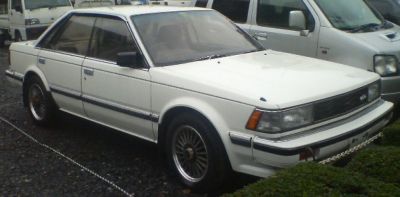
| Production: | 1983-1986 |
|---|---|
| Model Year: | 1983 |
| Length: | 4360 mm171.7 in |
| Width: | 1690 mm66.5 in |
| Height: | 1400 mm55.1 in |

| Production: | 2020-present |
|---|---|
| Model Year: | 2021 |
| Length: | 4384 mm172.6 in |
| Width: | 1725 mm67.9 in |
| Height: | 1450 mm57.1 in |

| Production: | 2020-present |
|---|---|
| Model Year: | 2021 |
| Length: | 4420 mm174.0 in |
| Width: | 1740 mm68.5 in |
| Height: | 1470 mm57.9 in |
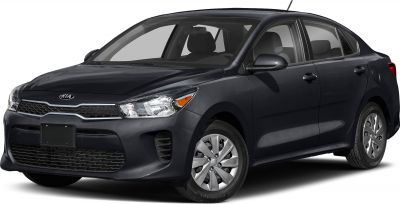
| Production: | 2017-2020 |
|---|---|
| Model Year: | 2017 |
| Length: | 4384 mm172.6 in |
| Width: | 1725 mm67.9 in |
| Height: | 1450 mm57.1 in |
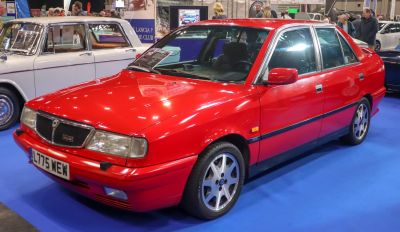
| Production: | 1989-1999 |
|---|---|
| Model Year: | 1989 |
| Length: | 4345 mm171.1 in |
| Width: | 1700 mm66.9 in |
| Height: | 1417-1430 mm55.8-56.3 in |
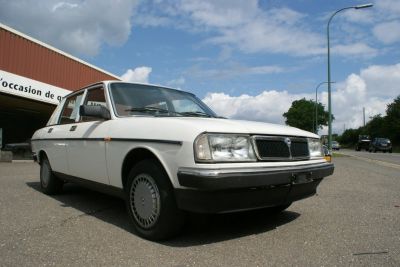
| Production: | 1982-1984 |
|---|---|
| Model Year: | 1983 |
| Length: | 4355 mm171.5 in |
| Width: | 1706 mm67.2 in |
| Height: | 1400 mm55.1 in |
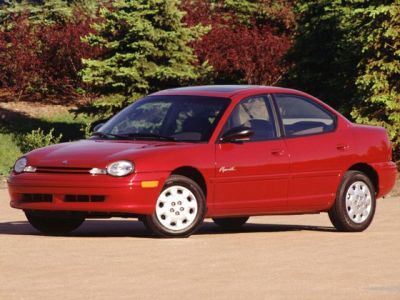
| Production: | 1994-1999 |
|---|---|
| Model Year: | 1994 |
| Length: | 4364 mm171.8 in |
| Width: | 1708 mm67.2 in |
| Height: | 1391 mm54.8 in |

| Production: | 2001-2011 |
|---|---|
| Model Year: | 2002 |
| Length: | 4376 mm172.3 in |
| Width: | 1735 mm68.3 in |
| Height: | 1446 mm56.9 in |
